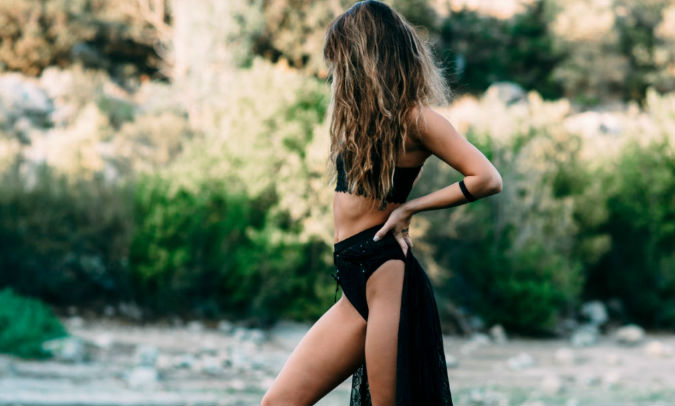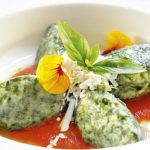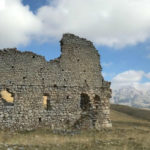Aroma therapy: “Every perfume is medicine”
The art of healing with fragrant essential oils – aromatherapy – is based on the idea that aroma does affect the mood. And it works, writes beauty editor, Josie Thomas.
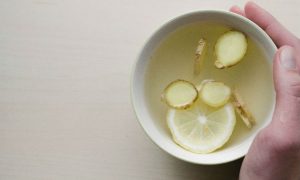
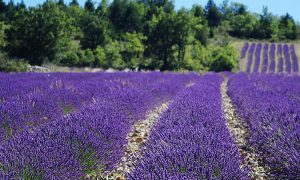
Wow… how 60s! Here we are in the middle of the caring, questing, politically correct two thousand and teens, and the bare mid-riffed sales assistant is simultaneously confiding her own fondness for mythology and urging me to go on, try just a little. You’ll really like it, she says.
Amid the dinky little boxes of New Age thoughts for the day, dragon’s spells (only good, no bad ones – ever), crystals, crystal cleaners, candles and Celtic tarot, she’s pushing… wait for it… patchouli.
Instant flashback. Patchouli – been there, done that. A whole generation swabbed on the oil extracted from this strongly scented East Indian plant and went straight to a blissed out Nirvana. Some took years to come back while others packed up their wind chimes, their loofahs, and their incense sticks and went straight to Byron Bay where they now guide eco-tours through modern day hippy country.
One basic fact about patchouli oil might have passed you right by in those more innocent days. According to Judith White and Karen Day, writing in Aromatherapy for Scents and Sensuality: “This oil has a rich Eastern aroma which can relieve anxiety and depression, and may even have an aphrodisiac quality, particularly when blended with ylang ylang… It works well as an antiseptic to heal chapped or broken skin and fungal infections including athletes foot. Old scar tissue responds well to a blend of patchouli and lavender.”
Historically, White and Day continue, patchouli “is remembered for its recent use during the 60s, promoting love and peace, not war.” An aphrodisiac! No wonder campus radicals seemed so attractive. It was the oil all the time, not the drugs, and the experience a primitive version of a highly developed practice, that of aroma therapy.
At New York’s famous cancer clinic, Sloane-Kettering, clinical trials have shown that heliotropin, a vanilla-style perfume, can reduce anxiety: There are anecdotal reports that vanilla is used as a calmative in some Australian retirement homes. In Great Britain, some hospitals vaporise lavender or chamomile to increase the sensation of well-being in patients: a spokesman for a Japanese medical school argues a double benefit for the use of fragrance in hospitals – “they help in the relation of the patients as well as in the workplace to help increase the work output.”
Stimulate or calm?
Michael Edwards, author of Fragrance Legends (2016, its 32nd edition) is Australia’s foremost “nose” in the perfume business. According to him, “studies have shown that fragrances can stimulate or calm us, encourage a good mood or bad, shape positive or negative memories and induce sweet dreams. Aroma therapy – the art of healing with fragrant essential oils – is based on the idea that aroma does affect the mood.”
In his Fragrance Manual series, Edwards wrote: “Fragrance has long been recognised as a powerful and subtle tool for re-balancing the mind and the body. In a recent study, peppermint and lily of the valley were found to increase alertness at work. In Tokyo, a number of buildings are now subtly scented to encourage a feeling of ‘well-being.’ A whiff of citrus gets the day off to a good start. An unobtrusive floral fragrance aids concentration in mid-morning and afternoon. A touch of cedar seems to relieve tiredness during the lunch break and the mid-afternoon.”
Modern research techniques show the effects of certain essential oils on brainwave patterns echo what has been known about fragrance for thousands of years. Edwards says that modern research is confirming what aroma therapists and perfumers have always believed – that fragrance effects psychology.
“By measuring brainwave activity and heart rate, researchers have proved that certain scents such as lavender and chamomile are calming, while others like neroli and bergamot are stimulating. In one test, computer keyboard operators typed 14 per cent more strokes an hour with a hint of citrus or cedar in the air, and made 21 per cent fewer errors,” Edwards says.
Just how does aroma therapy work? Odour moelcules hit the olfactory nerves in the bridge of the nose, where they are are characterised for quality, intensity, duration and volatility. Tiny nerve hairs on the cells – each equipped with as many as a thousand different receptors, each designed to respond to a small group of odours – ensure the smell message goes straight to the limbic system. This is the emotional seat of the brain which is mainly devoted to intertpreting those odours, but which also influences hormonal, metabolic and stress responses, as well as being the centre for desire, rage, fear and joy, according to Edwards.
Aroma therapy – which aims at working on that limbic system – is a modern science to contemporary perfumers, but it’s also an ancient art, recognised thousands of years before Christ by the Chinese who declared proverbially that “Every perfume is a medicine.” Strictly speaking, aromatherapy is “the use of concentrated plant-derived aromatic oils for health and well-being.”
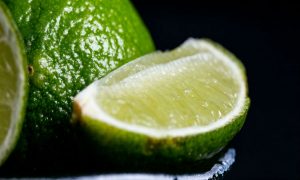
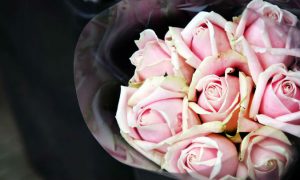
Uplifting, energising a tired mind
The burning of resinous gums such as frankincense and myrrh, originally a deodoriser to mask the smell of burning flesh in the burnt offerings for the gods, later became the greatest homage a human could pay to the other, spiritual world. By 3000 BC, Egyptians and Sumerians were bathing themselves in their favourite essential oils – jasmine, iris, hyacinth (to the ancient Greeks, uplifting and energising for a tired mind) and honeysuckle. Cleopatra used oil of roses, violets and crocus on her hands: to her feet was a blend of almond oil, honey, cinnamon, orange blossom and henna for colouring.
Hippocrates, Greek physician of the 5th century BC, already understood a clinical connection between body, spirit and the way in which smells could act to the benefit of the body itself. He advocated daily baths and perfumed massages as a path to maintaining good health, and also prescribed aromatics such as a mix of myrrh, cinnamon and cassia to act on both the body itself and as an elixir to revive the brain.
By the fourth century BC, Greek writers were recommending mint for the arms, cinnamon or rose for the chest, almond oil for the hands and feet, and marjoram extract for the hair and eyebrows. The art of oils moved to Rome and as the Republic conquered foreign lands, the fragrance repertoire expanded to include pine, cedar and ginger from the Middle East, as well as learning from the Greeks the art of extracting the oil of tangerine, orange and lemon.
While it was no accident the three wise men brought myrrh and frankincense as well as gold as tribute to the infant Jesus, the Christian Church did its best to stamp out pagan practices associated with aromatics during the Dark Ages. Consequently, the centre of learning about aroma therapy shifted into the Arab world where Avicenna, a philosopher and physician of the 10th century, argued the benefits of oils: “The interest in using excellent odours is that they fortify the senses. And when the senses are strong, the thoughts are strong and the conclusions upright. When on the other hand, the senses become weak, thoughts become unbalanced and their conclusions confused.”
By the 13th century, the therapeutic use of oils was commonplace in Europe once more. During the plague of 1348, the city fathers of Paris advocated the fragrance of camphor, sandalwood and roses (among others) for use during summer to help ward off evil humours and illness, while advising the use of “hot aromatics” such as cinnamon and nutmeg during the winter.
Smells fight back
Aromatics were largely out of fashion after the Reformation, among the casualties in the war against Papish embellishments to religion. Inevitably, they made a come back. In the 19th century, patchouli clung to cashmere shawls, fending off moths during the passage from India into England, then much later – and in a much bigger way and with a variety of companions – scented the Age of Aquarius.
But what was once a fringe activity – heating oils in an incense burner on the side board generally indicated a designer collection of rices in the pantry – has filtered straight into the mainstream. Perfumer Yardley of London launched Yardley Aromatherapy – a series of shampoos (Calming with sandalwood and nutmeg), soap (Calming with sandalwood and geranium), shower cream (Sensual with ylang ylang and citronella), massage oil (Sensual with ylang ylang and rosewood) and bath oil (Revitalising with rosemary and orange).
Habitat in London sells sea salts for the bath to rekindle those ozone-rich feelings attached to well-being at the seaside, the Oriental Spa at the Oriental Hotel in Bangkok offers aromatherapy sessions to calm, relax, energize and revitalize the rich and jaded. Here, shops such as Body and Soul, Crabtree and Evelyn, Red Earth, Essential Energies and the Body Shop are ready sources for the raw materials to deodorise and perfume bodies and houses.
All over Australia, people are sprinkling vanilla on the cranky to calm them down, pouring home blends of oils into vaporisers and applying peppermint oil to the cat to get rid of the fleas (careful – the moggies tend to glaze over if you go a little heavy on this.) Champa incense sticks are alight again in the homes of the nation, Floris burning oils such as Roman Hyacinth are on the lightbulbs and masseurs are mixing lavender and chamomile together with almond oil to bliss out clients during 90 minute previews of Nirvana.
I’m there, doing that. Mornings, I mix orange, rosemary and clary sage together in the vaporiser to improve my concentration. In the afternoon, I’m on the massage table (in the name of research, of course) and the aromatherapist is suggesting perhaps a little juniper to get rid of that excess fluid. Tonight, it’s the patchouli. How very 90s.


The smells themselves
Basil: slightly spicy; can aid concentration and raise the spirit; insect repellent. Mixes with orange, bergamot, geranium and herbal fragrances such as rosemary. Found in Clinique’s Wrappings, Lagerfeld Pour Homme.
Bergamot: citrusy, slightly floral; helps disperse anxiety and depression; can help in giving up smoking, supressing appetite. Mixes with lavender, neroli and other citrus oils. Found in Christian Dior’s Eau Sauvage, Clarins’ Eau Dynamisante, most eaux de cologne and eaux fraiches.
Camphor: penetrating, sharp; used by the Arabs to lessen sexual desire and hysteria; can help repell moths and other insects. Mixes with spicy and herbal oils.
Chamomile: fresh and grassy; used by the Ancient Egyptians to treat intermittent fever, one of the nine sacred herbs of the Saxons, it calms the nerves; can be used as a mild sedative in children. Mixes with pathcouli, jasmine, citrus oils. In Pink Lace by Yardley and L’Arte di Gucci.
Coriander: fresh, peppery; believed by the Chinese to aid longevity; sometimes used in small doses for headaches and depression – too much has a soporific effect. Blends with jasmine, bergamot, clary sage and spicy oils. Found in Christian Dior’s Poison, Donna Trussardi.
Eucalyptus: woody, fresh; a traditional bush remedy for healing wounds, reducing fever, and combating infection; antiseptic qualities help with respiratory congestion. Mix with lavender, pine, thyme.
Frankincense: rich, slightly woody and balsamic; used by the Egyptians for cosmetics and face masks, or mixed into pellets with honey to fumigate houses; has a calming effect on the mind; can be used as a tonic for mature skin. Blends with basil, neroli, pine, vetiver. In Yves Saint Laurent’s Opium, and other soft Oriental fragrances.
Juniper: balsamic, nutty, smoky; used for mummification in ancient Egypt and as a panacea for headaches and an antidote to the plague during the Middle Ages; temporarily relives fluid retention and stimulates circulation. Mixes with clary sage, cypress, lavender and woody oils. In Yves Saint Laurent’s Jazz, Drakkar Noir by Lancome.
Lavender: floral, soft; the most popular essential oil has a calming, soothing and anti-depressant effect, used in Roman times to scent bathwater, still used today to perfume linen, and underclothes; deters moths. Mixes with clary sage, geranium, neroli, orange. In fougere fragrances such as Jicky by Guerlain and Maja by Myrurgia, in Paco Rabanne pour Homme, and in English Blazer by Yardley.
Orange: fresh, fruity; in Europe of 10th century, recommended for epileptic fits, melancholia, heart problems, now thought to be beneficial to those suffering from a lack of energy or depression. Blends with lavender, neroli, lemon and spicy oils. In Kookai’s Oui-Non, in Guerlain’s Habit Rouge.
Mint: clean and fresh; known as a classic stomach remedy, considered by the Romans as a tonic for the brain (from “mente” for thought); has been used for migraine and headaches; aphrodisiac qualities attributed to it. Goes with eucalyptus, lavender and rosemary. Found in Guerlain’s Un Air de Samsara, XS by Paco Rabanne and Guerlain’s Derby.
Patchouli: earthy, medicinal; used as a remedy against snake bite and insects in the East and to perfume shawls and linen; a deeply relaxing oil known for its marked aphrodisiac effect; has certain fungicidal properties. Mixes with bergamot, vetiver, lavender and oriental oils. In Givenchy’s Gentleman, Tweed by Lentheric and Gem by Van Cleef and Arpels.
Rose (damask): floral, warm; according to Greek myth, roses grew from the blood of Adonis, while Muslims say they sprang from the sweat of the Prophet Mohammed; used as a general tonic and fortifier, soothing for the nerves and a good aphrodisiac (especially in women); supposed to be good for hangovers. Used with bergamot, jasmine, patchouli, sandalwood. In Paris by Yves Saint Laurent, Nahema by Guerlain, Eternity by Clavin Klein.
(Clary) Sage: mellow, musky; Egyptians used it for fertility while the Greeks and Romans thought it good for long life; now, used to treat PMT, some symptoms of menopause and mid-life crisis; useful in countering frigidity. Used with bergamot, sandalwood, orange and jasmine. Ex’cla.ma’tion by Coty, Aramis.
Sandalwood: amber, woody; in Tantric philosophy, a men only aroma zone for the awakening of the kundalin spirit; a soothing and spicy scent renowned as an aphrodisiac in the East, contains a constituent not unlike androsterone, a sexual signal in males. Mixes with fankincense, jasmine, rose and ylang ylang. In Casmir by Chopard, Joop! by Wolfgang Joop, Obsession for Men by Clavin Klein, Gravity by Coty.
Ylang Ylang: floral, sensual; a close cousin of the tuberose, it has a sedative effect and is used for those suffering from insomnia; said to help with post-natal depression. Blends with Jasmine, neroli, vetiver, sandalwood. In Chanel No. Five, Cacherel pour l’Homme and Nautica by Nautica.
How to use an essential oil
Vaporiser – The oil, or a combination of oils, are heated in water over a low flame so the volatile perfumes of the oil are released. Four or five drops each of lemon and pine in a vaporiser in the study or office can help concentration and is beneficial in a sick room.
Burning – The oils are added to a heat source, such as a light bulb.
Massage – In connection with base oils, such as olive, jojoba, sweet almond, apricot and wheatgerm, essential oils are used for body massage, or when combined with peach kernel oil for the the face. Blend two drops each of lavender, rose and melissa in a tablespoon of sweet almond oil – good for PMT, grief, mood swings, depression, is healing and restorative.
Bath – For relaxation. According to aromatherapists Judith White and Karen Day in Aromatherapy for Scents and Sensuality, add three drops of patchouli, two of lavender and two of orange to bathwater for relaxation; four drops of bergamot, two of orange, one of ylang ylang for a little uplift; two drops of marjoram, three drops of lavender and two of sandalwood have a sedating effect; and three drops of rosemary, two drops of lemon and two of peppermint are invigorating.
Compresses – For the skin. Soak a face cloth in water ((hot ro combat chrinic pain, cold for acute pain, tepid for fever) to which the oils have been added, wring out excess water, apply. Lavender can help reduce swelling and bruising – one drop combined with two of jumiper and one of frankincense. Three drops of clary sage and one of basil is recommended by White and Day for pre-menstrual tension and period pain.
Inhalation – Fill a bowl with almost boiling water, add the oil – peppermint and ecalyptus for blocked sinuses, ecalyptus, pine and cedarwood for bronchial congestion.
In your washing – Forget the fabric softener. Add two tablespoons of vinegar with a drop of essential oil to the rinse and you will live in an aromatherapy cloud from dawn till dusk.
Main image: Photo by Kaci Baum on Unsplash
Second image: Tea photo by Dominik Martin on Unsplash
Third image: Lavender field in the Drôme region of France, Wikicommons
Limes image: Photo by Luke Besley on Unsplash
Roses image: Photo by Caroline Attwood on Unsplash
Ylang Ylang image: Photo from Wikicommons
Frankincense in Dubai spice market image from Wikicommons

